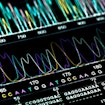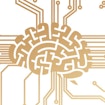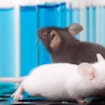
Comprehensive studies of the human genome using high-speed DNA sequencing have identified new genes whose mutations appear to contribute to autism. One class of autism genes consists of regulators of the way that cells, including neurons in the brain, compact their DNA so that it can fit into the nucleus of the cell, while also being available for the selective production of proteins required for brain function. These genes, called chromatin regulators, appear to be among the most frequently mutated genes in individuals with autism. It seems that chromatin regulators control the production of proteins necessary for the development of neural circuits, and perhaps transmission of electrical impulses in the brain.





